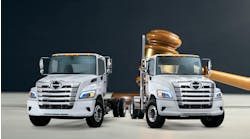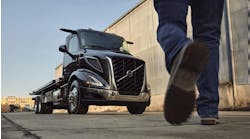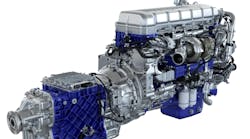Keeping up with drivetrain technologies
Ken Davis, founder of Greentree Advisors, told attendees at a recent NationaLease meeting that their world “was about to get very complicated.” That complication is going to be the result of emerging drivetrain technologies.
Future drivetrains will be guided by regulatory changes. In 2027, conventional internal combustion engine drivetrain CARB and EPA standards will align. There will be four areas of compliance required:
- Warranty standards: These will cover turbochargers, EGR coolers, injectors, DEF metering devices, dosers, e-heaters, sensors and software. For medium-duty vehicles the proposed regulation is that in 2027 a seven-year warranty would be required and by 2021 that would shift to 10 years. For heavy-duty vehicles the required coverage would be seven years/450,000 miles in 2027 and 10 years/600,000 miles in 2031.
- Greenhouse gas phase 2 CO2 standards: There will be a variety of ways for truck makers to meet these standards, including for aerodynamic devices, low rolling resistance tires, engine-off-at-idle systems, neutral coast, road speed control, acceleration controls, shift calibration, etc.
- Proposed NOx and particulate matter reductions: In 2027 CARB wants NOx tailpipe emissions to be at 0.02G/HPH and PM levels to be at 0.005G/HPH. Proposed solutions for meeting these goals on diesel-powered vehicles include cylinder deactivation, e-heaters, 48V systems, next-generation aftertreatment systems, advanced NOx sensors, advanced temperature sensors. Natural gas engines, gasoline engines for medium-duty vehicles and hydrogen fuel cells are other options.
- Electric vehicle credits: There have been a multitude of new entrants into the market with battery electric vehicles and more are jumping in each quarter.
Each of these areas is going to not only add complexity but also increase costs. However, these changes cannot be avoided. Although meeting many of them will be the responsibility of the truck makers, fleets will bear the increased cost and have to deal with the maintenance and repair of more complex vehicles.
The current administration is on the record about its desire to reduce greenhouse gas emissions and will be a driving force behind more stringent drivetrain requirements for internal combustion engines. As internal combustion engines become more complex, battery electric vehicles will evolve into the least complex solution although the charging infrastructure is the biggest obstacle to their widespread deployment. However, OEMs will need electric vehicle credits to attain compliance with 2027 emission standards.
As Davis said, things are going to get very complicated for fleets and it is important to keep informed about drivetrain changes as well as other developments in the trucking industry.



